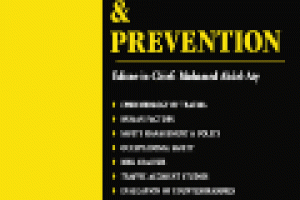Thailand Accident Research Center
ศูนย์วิจัยอุบัติเหตุแห่งประเทศไทย
Influences of Motorcycle Rider and Driver Characteristics and Road Environment on Red Light Running Behavior at Signalized Intersections
In Thailand, red light running is considered as one of the most dangerous behaviors at intersection. Red light running (RLR) behavior is the failure to obey the traffic control signal. However, motorcycle riders and car drivers who are running through red lights could be influenced by human factors or road environment at intersection. RLR could be advertent or inadvertent behavior influenced by many factors. Little research study has been done to evaluate the contributing factors influencing the red-light violation behavior. This study aims to determine the factors influencing the red light running behavior including human characteristics, physical condition of intersection, traffic signal operation, and traffic condition. A total of 92 intersections were observed in Chiang Mai, Nakhon Ratchasima, and Chonburi, the major provinces in each region of Thailand. In addition, the socio-economic characteristics of red light runners were obtained from self-reported questionnaire survey. The Binary Logistic Regression and the Multiple Linear Regression models were used to determine the characteristics of red light runners and the factors influencing rates of red light running respectively. The results from this study can help to understand the characteristics of red light runners and factors affecting them to run red lights. For motorcycle riders and car drivers, age, gender, occupation, driving license, helmet/seatbelt use, and the probability to be penalized when running the red light significantly affect RLR behavior. In addition, the results indicated that vehicle travelling direction, time of day, existence of turning lane, number of lanes, lane width, intersection sight distance, type of traffic signal pole, type of traffic signal operation, length of yellow time interval, approaching speed, distance from intersection warning sign to stop line, and pavement roughness significantly affect RLR rates.


